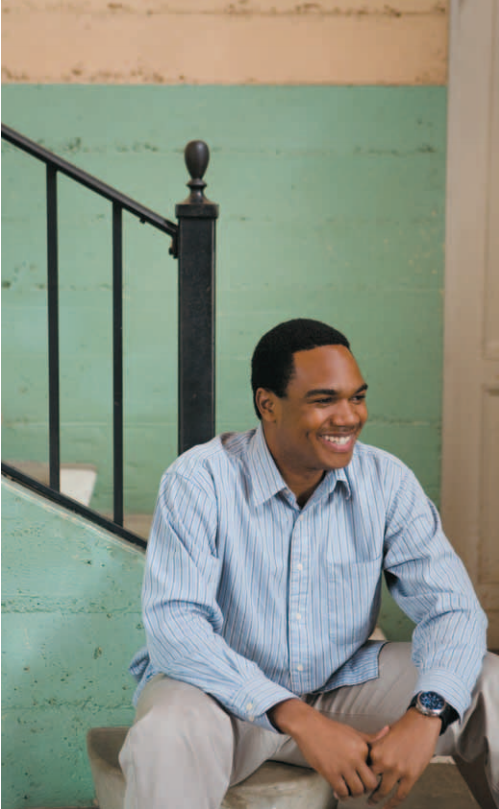Post Election, Post Race?
The election of Barack Obama to the nation’s highest office was a defining moment in American history and our discourse on race. Shortly after the 44th president took office, a new debate began taking shape across the country addressing the growing sentiment that America had begun to cross the threshold of becoming a post-racial society. It begged the question: Had we exorcised one of our country’s oldest demons?
Since the election, these questions have figured prominently in scholarly debates, publications, and everyday conversation. Even the newly appointed Attorney General, the first-ever African-American to hold the post, Eric Holder, dared to raise the issue. While optimism for the prospect of a society free of racial division underscores many of these discussions, it has also been accompanied by a growing distrust of institutions that appear to be polarizing vestiges of racial politics. Amid the growing consensus among liberal pundits that class, not race, is the key determinant of success in America today, race-based organizations and institutions find themselves under a more critical microscope. The critique holds that in a post-race society, these organizations and institutions highlight difference and ultimately encourage division. Characterized in this manner, racebased organizations come to be viewed as divisive because they exacerbate rather than diminish the importance of race as we attempt to move forward. We find ourselves asking: Have we really arrived?
What is the purpose of race-based student organizations like the Black Law Students Association (BLSA) or their professional counterparts like the National Bar Association or the Charles Houston Bar Association in our post-Obama-election world? In my experience, these organizations continue to provide an invaluable role for the communities they serve. As stressed by our Black Law Students Association, insofar as ethnic organizations are progressive in their missions and pursue integrative solutions to the challenges facing their constituencies, they will continue to be viable. And the harsh reality is that even with an African-American leading the nation and another leading the DOJ, the legal profession is still not fully representational. According to a report prepared by the American perspectives Bar Association titled Miles To Go: Progress of Minorities in the Legal Profession, only 3.9 percent of our nation’s lawyers are African-American. The report also notes steady attrition rates of AfricanAmerican students attending law schools. When compared with the disproportionate percentages of African-Americans who fall victim to ill effects of poverty, underemployment, and the criminal justice system, the message to black lawyers of all ages becomes crystal clear: There is much more to be done.
BLSA strives to build community and forge alliances among its members and alumni, work we feel is essential if the legal profession is to become more diverse and integrated. We also work very closely with the other student-of-color organizations at the law school (Asian and Pacific Islander Law Students Association, Native American Law Students Association, and Stanford Latino Law Students Association) to exchange academic and career resources, plan social outings, host academic discussions, and follow through on initiatives to increase diversity among the faculty and student body. As a result of the successes of these efforts, I believe the post-race discourse would benefit far more from discussions of cross-racial coalition building than a call for the rejection of race.
One thing that may not be readily apparent about the membership of BLSA is its diversity, both ideological and racial. We are black, white, Hispanic, Asian, conservative, liberal, gay, straight, and we hail from all over the country—and by extension the world. There is no monolithic worldview, political id

eology, or cultural understanding of blackness that informs our efforts. Rather, we come together as a community organization—with everyone bringing his or her particular history, perspective, and outlook to the table—and seek ways to address issues facing minorities and people of color throughout the world. This outward-looking perspective, which acknowledges and celebrates race but also encourages constructive dialogue that cuts across race and class lines, is what we strive to accomplish in BLSA. With this in mind, our monthly programming covers a broad spectrum of event types and topics.
Our monthly general body meetings are the bread and butter of our organization. We use them first and foremost to check in with each other to ensure everyone is doing all right navigating the rigors of law school. During these meetings we discuss the range of short- and long-term initiatives on our calendar. These include everything from monthly academic talks, public service initiatives, and social events to annual events like our BLSA Conference (where we bring distinguished academics and practitioners to campus to discuss major issues facing minority communities and the legal world).
The continued strength and versatility of our organization is owed to the outstanding students and alumni at its core. There are no requisites for membership in BLSA. If there were any, being of African ancestry would not be one of them. Instead, as the membership and alumni continue to demonstrate to me on an ongoing basis, the only requisite seems to be dedication. Dedication to breaking down barriers to legal access for those who need it most, to serving one’s community (however broadly or narrowly construed), and to the prospect of bequeathing a better legal profession to the next generation than the one we inherited. Have we arrived? I don’t think so. But organizations like BLSA work hard every day to ensure that we are edging closer.
